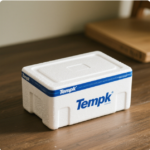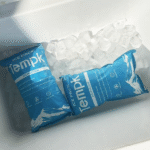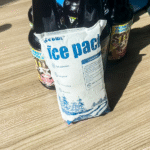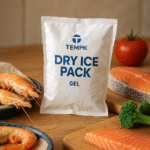So nutzen Sie Trockeneis für Kühlboxen und sorgen für einen sicheren Versand: Ein umfassender Leitfaden
Dry ice is a powerful cooling solution that plays a crucial role in cold chain logistics. It ensures the safe transport of perishable goods, ranging from frozen foods to pharmaceuticals. Understanding how to handle dry ice effectively is essential for anyone shipping temperature-sensitive items. This guide will walk you through the best practices for using dry ice in coolers, sicher sicherstellen, efficient shipping, and maintaining product integrity.
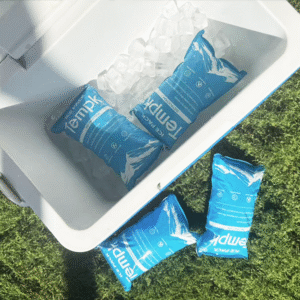
-
What dry ice is and how it works for coolers.
-
The best practices for using dry ice in coolers.
-
How to safely ship products with dry ice.
-
Common mistakes to avoid when using dry ice for shipping.
What Is Dry Ice and How Does It Work for Coolers?
Trockeneis ist die feste Form von Kohlendioxid (CO2), which sublimates directly from a solid to a gas at -78.5°C (-109.3° F). This sublimation process makes it an ideal cooling agent, as it maintains a very cold environment without the mess of water residue left by regular ice.
Key Takeaways:
-
Dry ice absorbs heat from its surroundings, maintaining a very cold environment.
-
It’s perfect for shipping temperature-sensitive goods like frozen foods, Impfungen, und biologische Proben.
-
Dry ice can keep items frozen or at low temperatures for extended periods, making it indispensable for long-distance shipping.
Why Use Trockeneis für Kühler in Shipping?
Dry ice is preferred over regular ice for several reasons:
1. Longer Cooling Time:
Dry ice maintains lower temperatures for much longer, oft bis zu 24-48 Std., depending on the quantity used and the cooler’s insulation. Im Gegensatz zu Wassereis, which melts and loses cooling power quickly, dry ice continues to absorb heat without turning into a liquid.
2. No Water Residue:
Regular ice melts into water, potentially compromising the packaging and causing items to become soggy. Dry ice sublimates into a gas, leaving no water behind. This makes it particularly useful for shipping food, Arzneimittel, und andere sensible Waren.
3. Efficiency for Long-Distance Shipping:
For international or overnight shipments, dry ice ensures your goods remain within the required temperature range, eliminating the risk of thawing or spoilage during transit.
Best Practices für die Verwendung von Trockeneis in Kühler
1. Stellen Sie eine ordnungsgemäße Belüftung sicher:
Bei Verwendung von Trockeneis, it’s essential to ventilate the cooler or shipping box. Trockeneis unterschwellt zu Kohlendioxidgas, which can displace oxygen in an enclosed space, posing significant health risks, einschließlich Erstickung. Always ensure your cooler has vents to release the gas safely.
2. Wählen Sie die richtige Verpackung:
Select insulated coolers or boxes specifically designed to handle the extreme cold of dry ice. To further protect your items, consider double-boxing, especially for long-distance shipments, to minimize temperature fluctuations.
3. Use Correct Quantities:
The amount of dry ice required depends on the shipment’s duration and the goods being shipped. In der Regel, use around 5-10 pounds of dry ice for most shipments. For longer transit times, increase the amount accordingly.
Key Safety Considerations for Dry Ice Shipping
1. Handling with Care:
Dry ice can cause severe burns, so always wear insulated gloves when handling it. Direct contact with skin can lead to frostbite.
2. Transportation Regulations:
Shipping with dry ice is regulated by law. Ensure you’re aware of the weight limits (normalerweise 5.5 lbs per package), as well as the need for proper labeling. Packages containing dry ice must be clearly marked with the appropriate hazardous materials labels to ensure safety.
3. Labeling and Documentation:
Correct labeling is essential for dry ice shipments. Ensure that your package includes labels such as “Trockeneis” and the weight of the dry ice used. This ensures that handlers are aware of the potential risks and can take appropriate precautions.
How to Ensure Safe Shipping with Dry Ice
Selecting the Right Cooler
Choosing the correct cooler is crucial for maintaining the efficiency of dry ice during shipping:
-
Styrofoam Coolers: Ideal for short-distance shipments, these coolers provide decent insulation but may not be sufficient for long-distance shipping.
-
Thermal Insulated Boxes: These boxes are designed for cold chain shipping, providing higher insulation levels and extended cold retention. They’re perfect for long-distance shipments.
-
Pre-cooling Your Cooler: Vor dem Hinzufügen von Trockeneis, it’s beneficial to cool the container using gel packs or by freezing it overnight. This extra step helps maintain a consistent cold temperature for longer periods.
Belüftung ist der Schlüssel
Proper ventilation is critical when using dry ice. Als Trockeneis untermauert, it turns into carbon dioxide gas. Ohne ordnungsgemäße Belüftung, the pressure inside the cooler can build up, leading to dangerous situations, including the possibility of the container bursting. Ensure that the cooler or box has vents to allow the gas to escape.
Calculate the Amount of Dry Ice
The amount of dry ice needed varies depending on the size of the cooler and the duration of the shipment. A general rule of thumb is:
-
For 24-hour shipments: Use approximately 5 pounds of dry ice for every 5-10 pounds of perishable goods.
-
Für längere Sendungen: Hinzufügen 1-2 pounds of dry ice for every additional 24 hours of transit.
Use the Correct Packaging Materials
When packing dry ice in coolers, use the appropriate materials to avoid mishaps:
-
Polyethylene Bags: These bags are ideal for containing the dry ice while allowing it to sublimate.
-
Isolierte Verpackung: Ensure that your packaging materials—such as foam or double-walled cardboard boxes—are designed to contain the dry ice and reduce its escape, helping to maintain the cold longer.
Packaging Type and Duration
| Verpackungstyp | Insulation Type | Ideal für | Expected Duration |
|---|---|---|---|
| Styrofoam Cooler | Erweiterter Polystyrol | Short-distance | 12-24 Std. |
| Thermal Insulated Box | Foam or vacuum-sealed | Long-distance | 24-72 Std. |
| Polyethylene Bag | Flexible plastic | Direkter Kontakt | 12-48 Std. |
Avoid Common Mistakes When Shipping with Dry Ice
1. Not Labeling Correctly:
Always ensure that your package has the necessary labeling, einschließlich “Trockeneis” and the weight of the dry ice used. Incorrect labeling can lead to delays or mishandling.
2. Exceeding Shipping Limits:
Different carriers have different rules regarding dry ice weight limits, Typischerweise 5.5 lbs. Always check the regulations for your specific carrier before shipping.
3. Using Incorrect Insulation:
Using poor-quality insulation or a non-ventilated container can lead to the dry ice sublimating before your shipment arrives. This will result in the goods arriving warm and potentially spoiled.
2025 Trends in Dry Ice Shipping for Coolers
The cold chain logistics industry continues to evolve, with a focus on improving safety, Effizienz, und Nachhaltigkeit. New trends are emerging that promise to revolutionize how dry ice is used in shipping:
Neueste Entwicklungen bei Trockeneisschifffahrts
-
Intelligente Verpackungen: Emerging smart packaging technologies now allow real-time monitoring of temperature and humidity, enabling businesses to track shipments more effectively.
-
Nachhaltige Alternativen: As the demand for eco-friendly solutions increases, there is growing interest in sustainable alternatives to dry ice, such as hybrid cooling packs.
-
Regulatory Changes: Shipping regulations are tightening, and more countries are adopting stringent environmental and safety laws for dry ice transportation.
Consumer and Market Insights
With the rise of e-commerce and the increasing demand for fast, reliable shipping, the use of dry ice for cooling and shipping remains essential. As businesses prioritize fast, reliable delivery, dry ice continues to be one of the most reliable methods for preserving temperature-sensitive items.
Häufig gestellte Fragen (FAQs)
Q1: What is the maximum amount of dry ice I can ship?
The general limit for dry ice is 5.5 lbs per package, but it varies by carrier. Always check the specific regulations of the shipping company you’re using.
Q2: How do I dispose of dry ice?
Allow the dry ice to sublimate in a well-ventilated area. Never dispose of it in an enclosed space, as the gas can be hazardous.
Schlussfolgerung und Empfehlungen
To successfully use dry ice for coolers and ensure safe shipping, it is vital to follow best practices such as selecting the right cooler, using appropriate packaging, and adhering to shipping regulations. Proper ventilation, Beschriftung, and safety precautions will help ensure your shipment arrives in optimal condition.
Next Steps for Your Business
-
Review Your Shipping Process: Ensure that dry ice is integrated effectively into your shipping processes.
-
Optimize for Efficiency: Implement the latest advancements in cold chain logistics to improve safety and reduce costs.
-
Partner with Experts: Work with logistics providers who specialize in cold chain and dry ice shipping to ensure the best possible results.
Über Tempk
Und Tempk, we specialize in providing cold chain solutions tailored to your shipping needs. With a focus on quality, Sicherheit, und Nachhaltigkeit, our products are designed to help you achieve optimal freshness and safety for your temperature-sensitive products.
Consult with us for expert advice on dry ice shipping and optimizing your cold chain logistics.



















